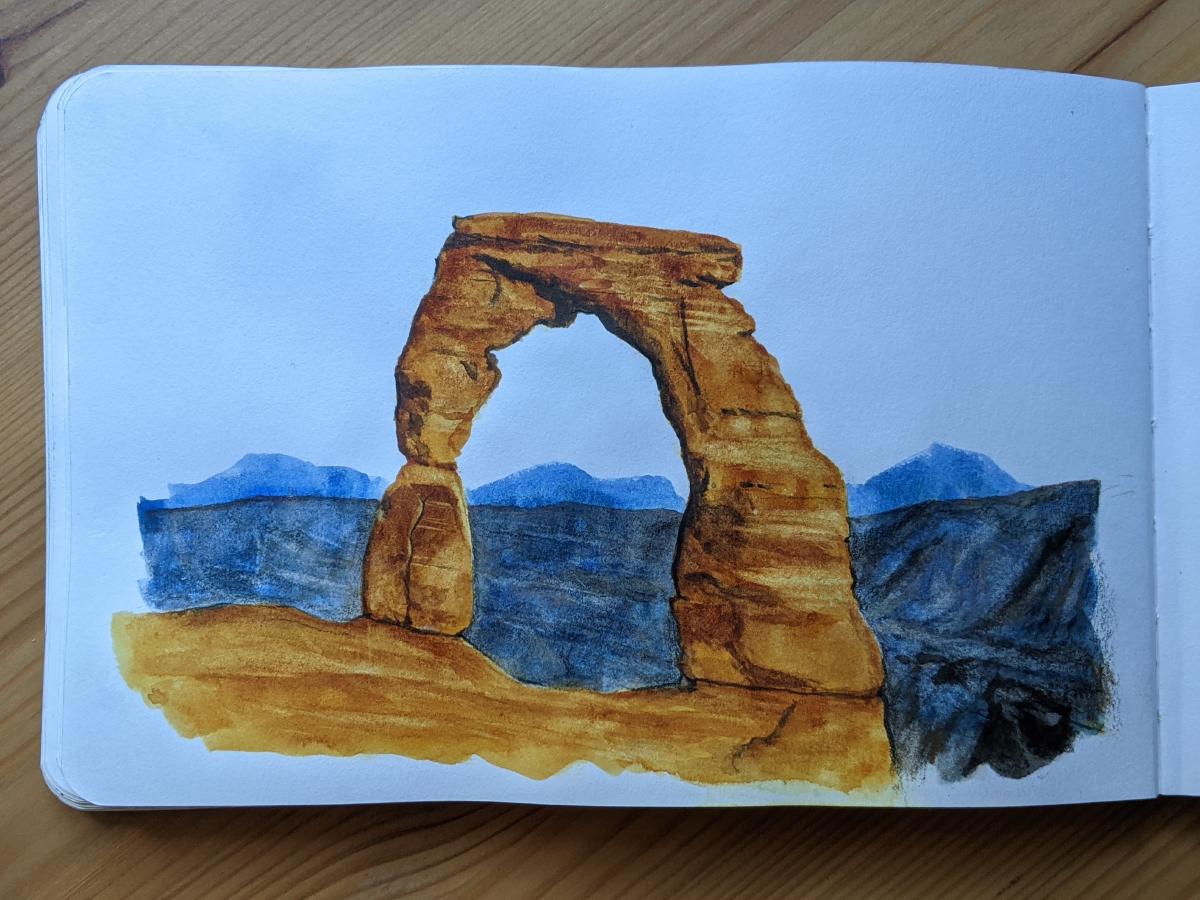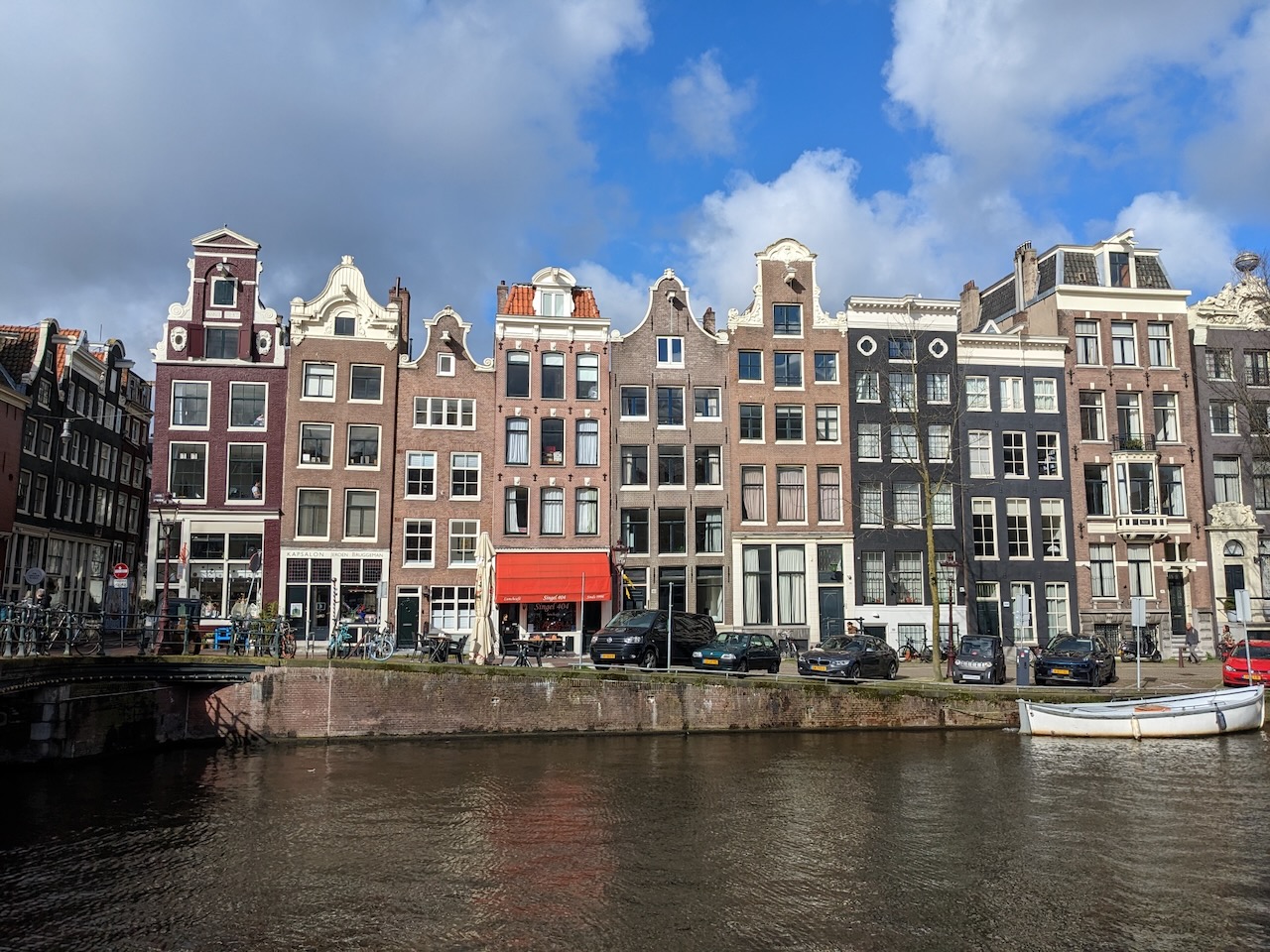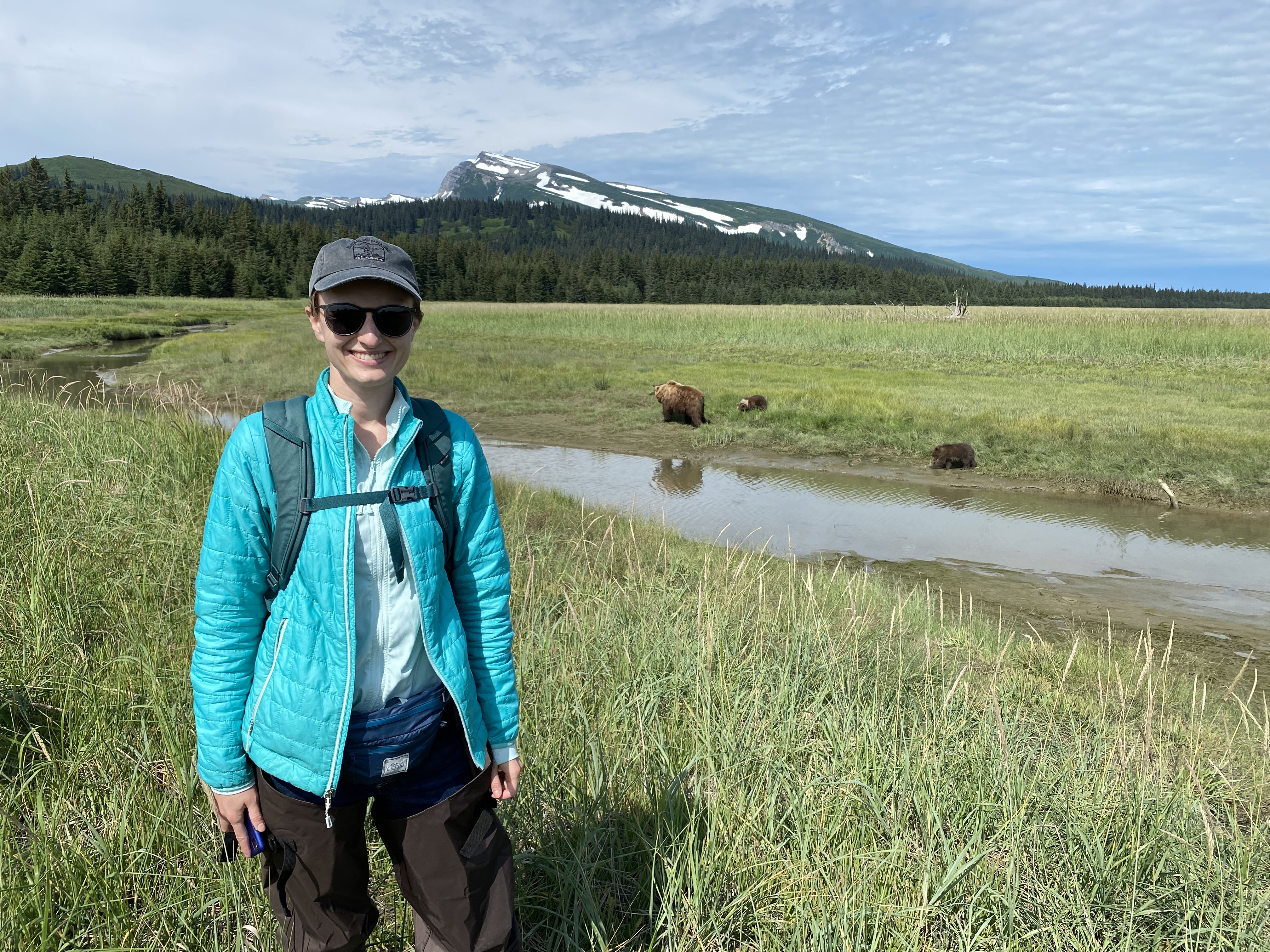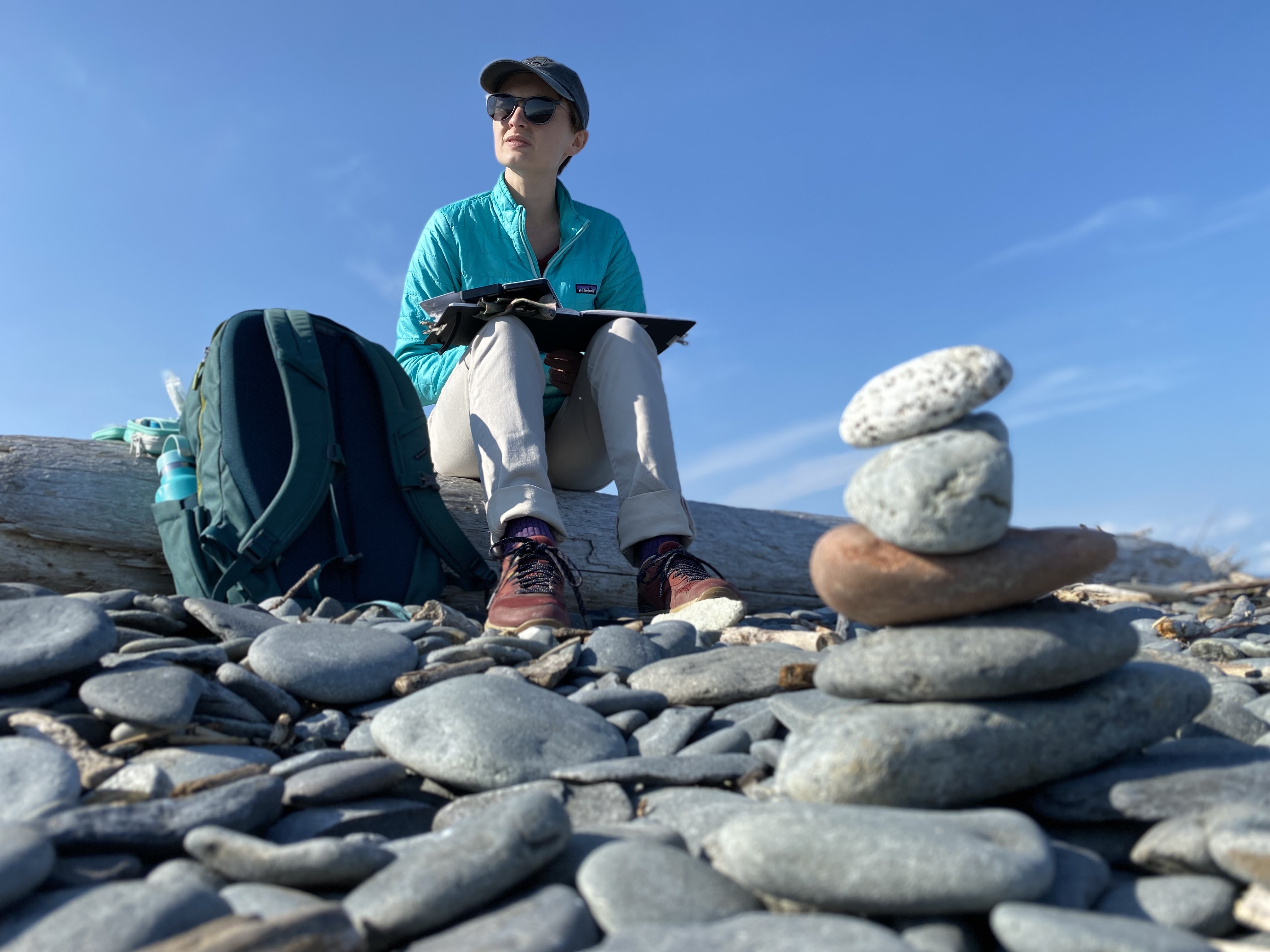
This post recaps my sketchbook from my Alaska trip in 2022. The blog post about the trip can be found here.
Sketching Progress Update
Since my last serious travel sketching experience in Portugal, I have doubled down on learning about watercolors. I enrolled in Liz Steel’s online Watercolor course. Liz is a fantastic urban sketcher who has engaging and thorough content on her blog and in multiple online courses. She focuses on strategies for capturing the essence of a place in a short period of time. Her love of play and experimentation is infectious! Through her 6-week course, I gained familiarity with my new brushes from Rosemary and Co (my favorite so far is a sable/nylon blend 1/4" dagger).
When I was using a waterbrush, I realized I wasn’t getting the most out of my watercolors. Using a real brush allows much more control over the amount of pigment and water and creates much more lively results in painting (Liz calls it “watercolor magic”). I just carry a little water bottle with me to clean and wet the brush.
The Master Palette is like a dictionary of colors that I can use in my paintings.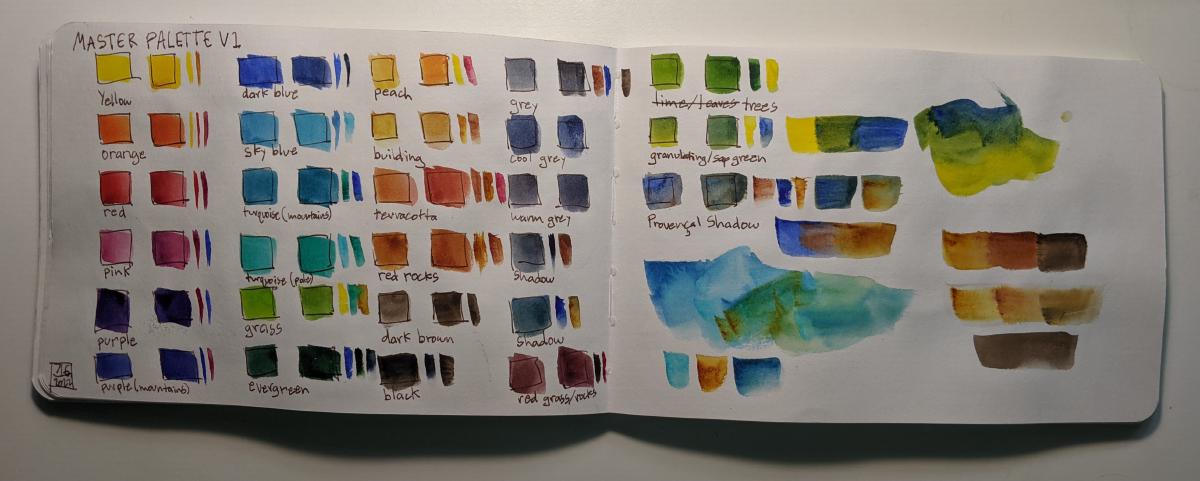
One of the best exercises from the class was to create a Master Palette. When out on location, it wastes precious time to look at an object and come up with color mixes from scratch. If you can start with a “tree green” or “sky blue” and modify as needed for the specific scene, painting becomes much faster, and time can be spent on dialing in other aspects of the painting. If paints in my palette represent individual letters, then the Master Palette is a dictionary filled with combinations of these colors. It’s not comprehensive, but just knowing how my paints mix and having an initial best guess for a color match in my style makes a huge difference. It also brings a cohesiveness to my work as sketches pull from a shared vocabulary of mixes.
I’ve also transitioned from Pigma Micron fine-liner pens to a real bona-fide fountain pen. My favorite right now is the LAMY Safari with a fine nib, which is a tried-and-trued and durable Bauhaus-designed urban sketcher’s favorite. A fountain pen allows for more expressiveness and character in lines. I’m currently using De Atramentis Document Brown Ink, which is richly colored and waterproof. I feel that brown ink captures my voice better than black ink.
Using my unique sky blue mix and LAMY Safari fountain pen. I really found my style when painting this Lake Michigan trio.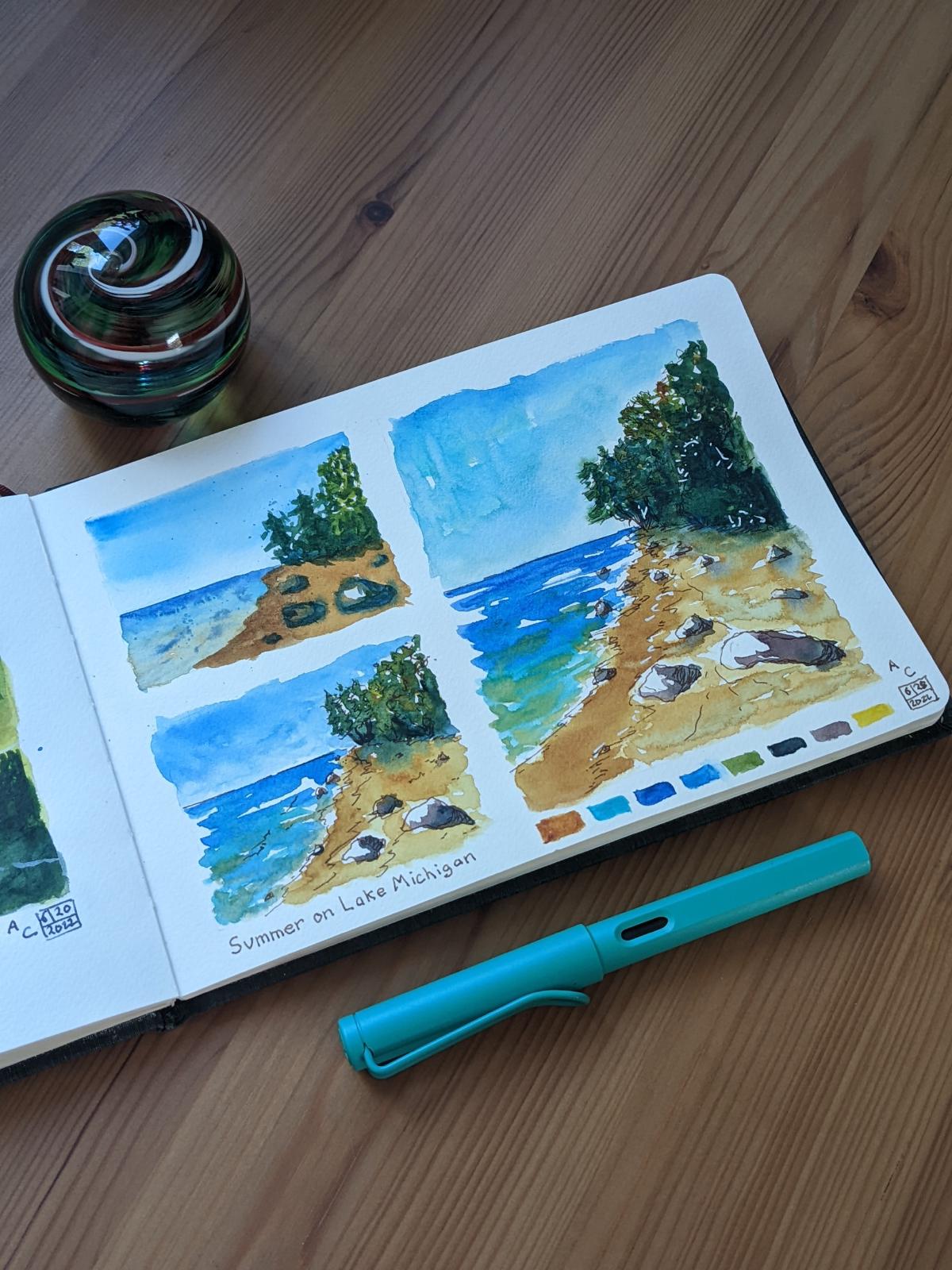
Preparation for Alaska
My next prime sketching opportunity was a trip to Alaska in July. In advance, I practiced trees, grass, mountains, water, and skies. The real brushes hold so much more pigment than a water brush and let me get much bolder effects in skies and washes.
I love the way the golden light hits the mountains on the left. The scene on the right needs… some contrast?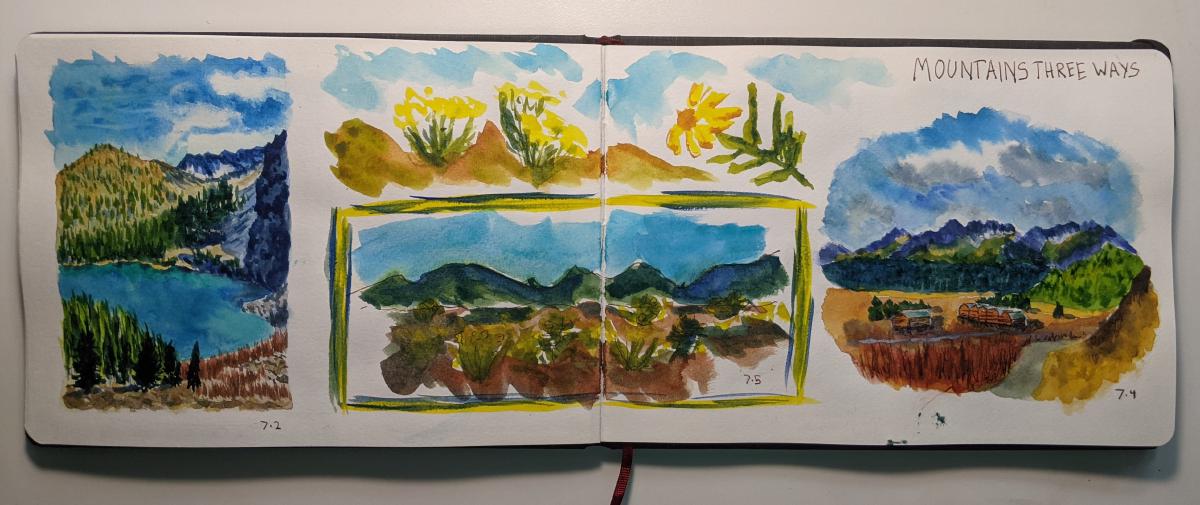
Alaska Sketchbook Pages
Some of these were painted on-site and others from photographs I took during the trip. I played around more with page layouts, borders, and composition on this trip.
In the following section, I’ll show you some of the subjects of the paintings so that you can see how they transferred to the sketchbook.
Enjoying a Chicago dog at the airport, flying over glaciers, and watching the seaplanes. Beautiful and serene Silver Salmon Creek Lodge. A boat day trip to Puffin Island and Fossil Point! The view from the end of the Homer Spit, plus the Salty Dawg Saloon. Memories from our foggy Seward day cruise. We did see an orca whale breach, but not quite like that!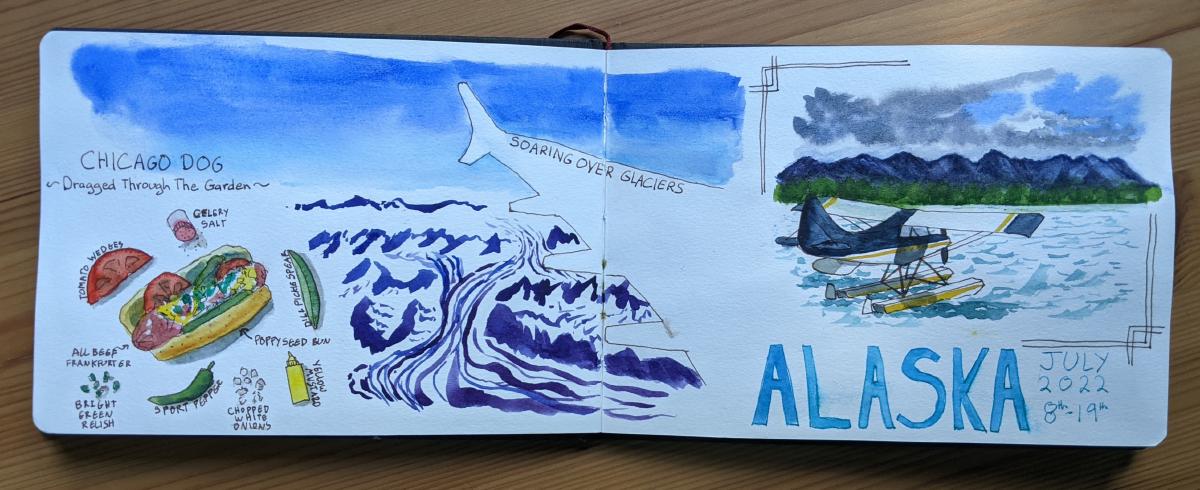
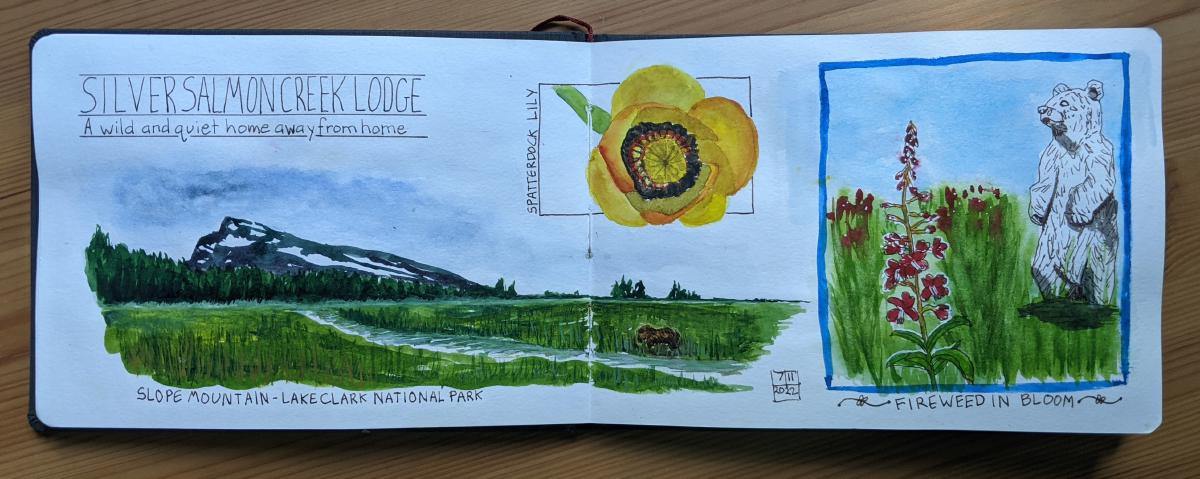
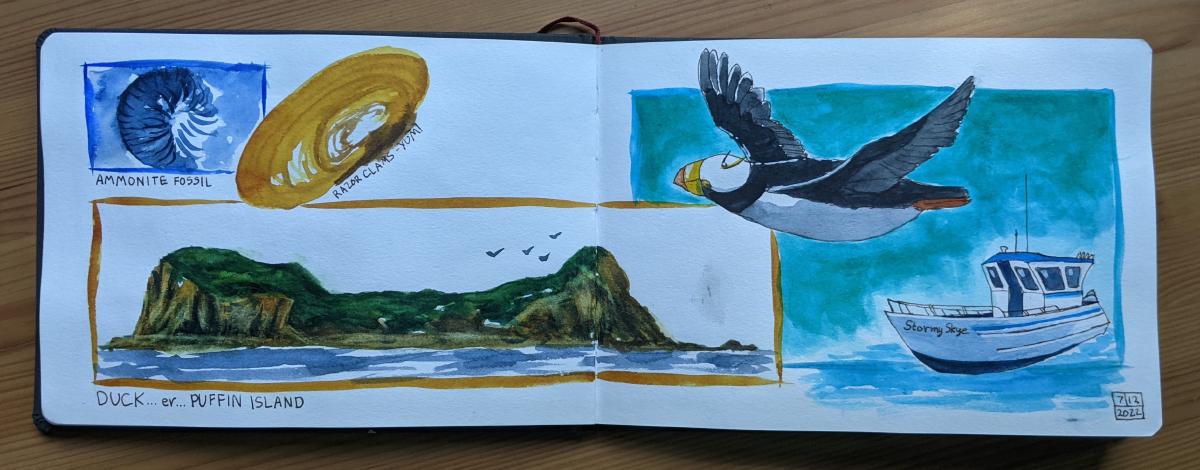
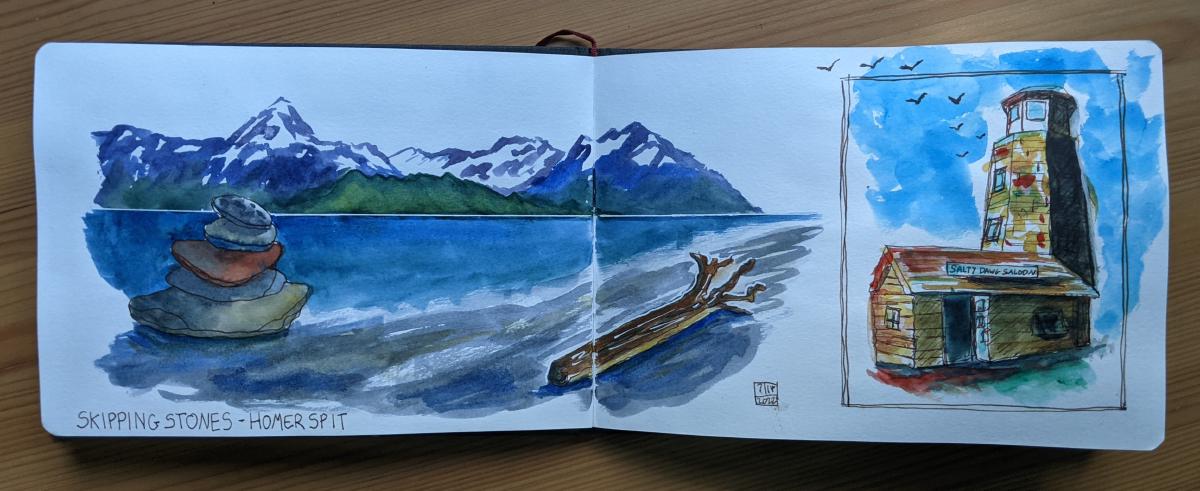
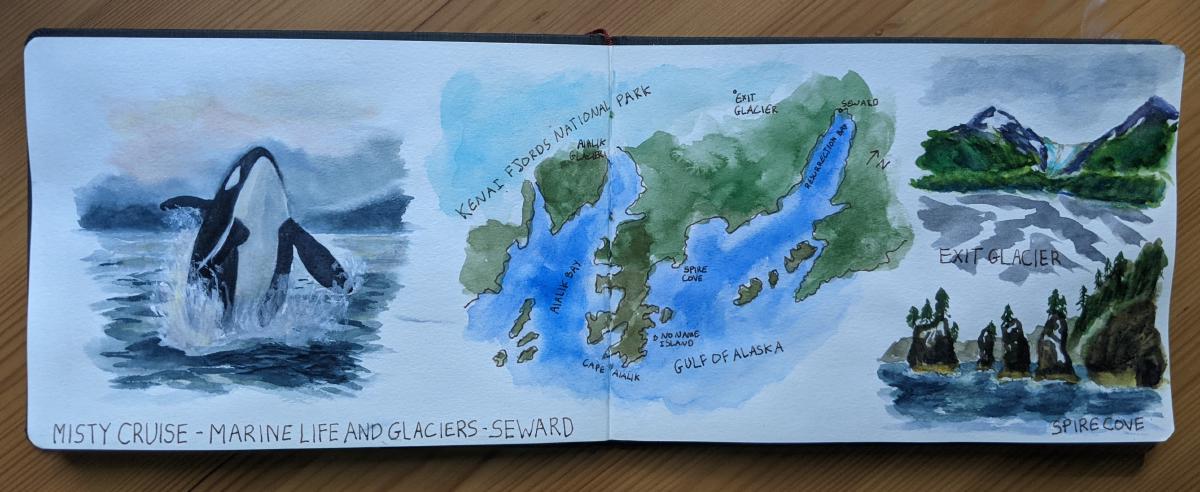
The Process of Painting
The daily practice of June’s direct watercolor challenge and Liz Steel’s course meant that I had far more experience than I did for Portugal. I was much more familiar with my paints and mixes. Some of these spreads were painted while looking at the vista, others from a photograph back at the hotel, and final sketches and annotations completed back at home.
Who doesn’t love a good airport sketch and a delicious Chicago dog to burn a few hours? I have a little bottle of water (a travel sunscreen container) for rinsing my brush that I can easily fill up and empty when it gets dirty.
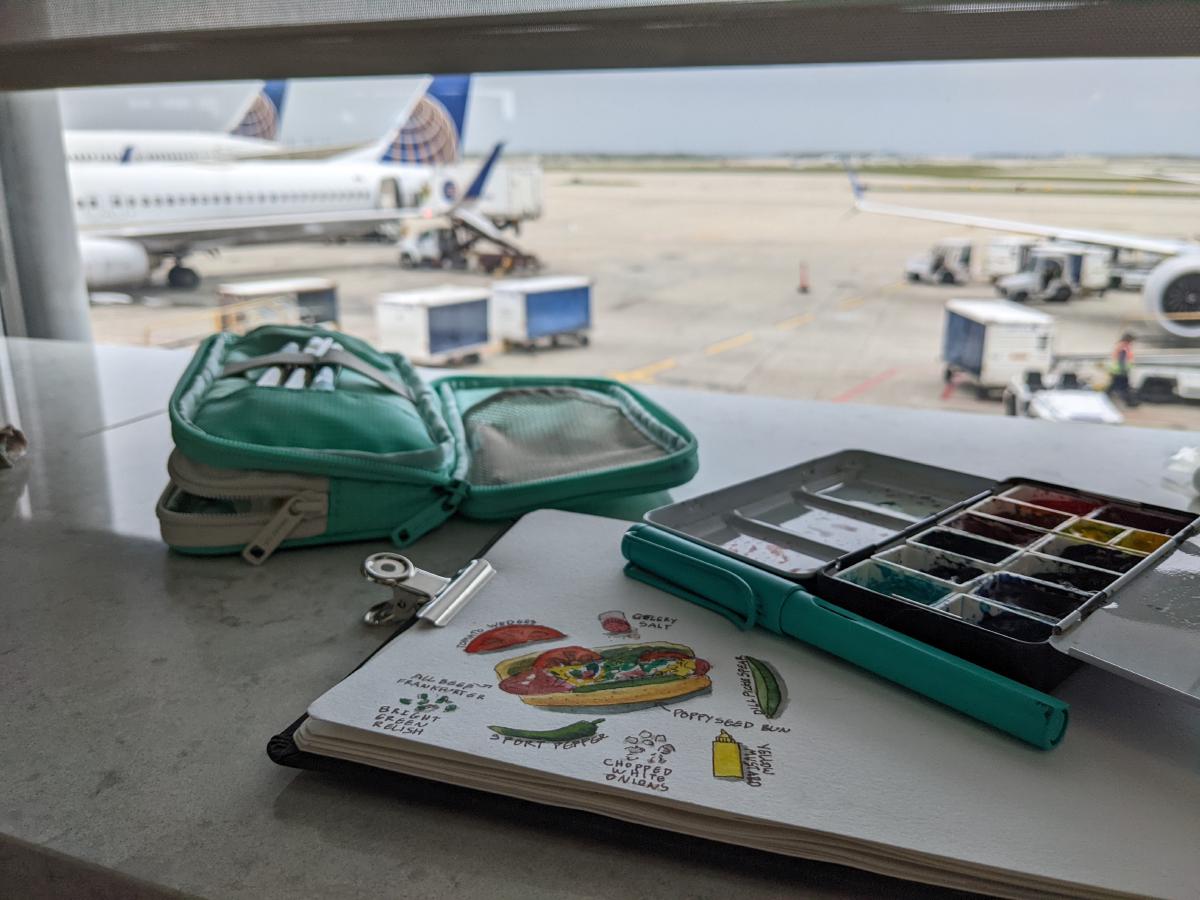 I think everyone on the plane probably took this glacier picture while flying into Anchorage.
I think everyone on the plane probably took this glacier picture while flying into Anchorage.
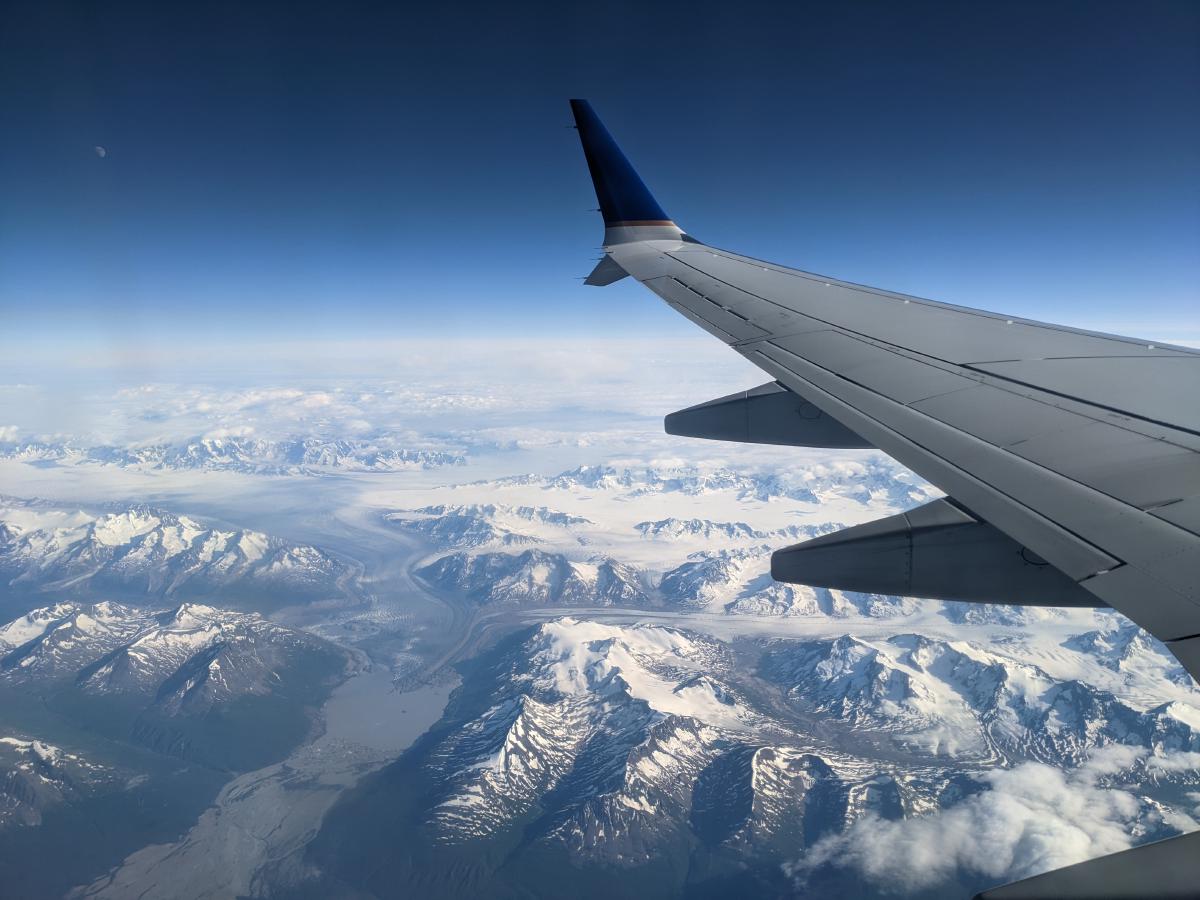 What a beautiful sunny day! That morning started very foggy, and the day ended with not being able to see the water from the hotel.
What a beautiful sunny day! That morning started very foggy, and the day ended with not being able to see the water from the hotel.
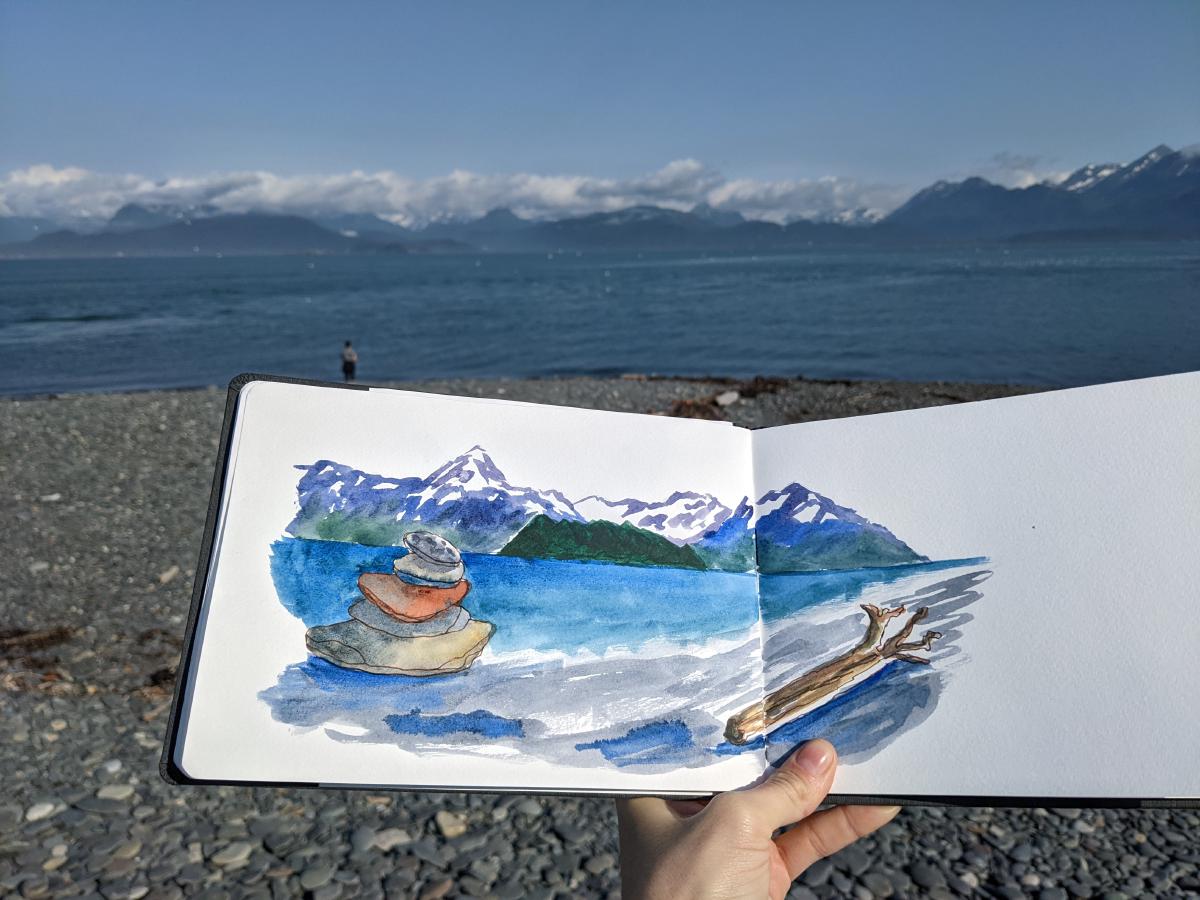 I took some liberties with the colors of the Salty Dawg Saloon, but I had COVID while painting and just needed to do something fun! I like the birds flying out of the frame.
I took some liberties with the colors of the Salty Dawg Saloon, but I had COVID while painting and just needed to do something fun! I like the birds flying out of the frame.
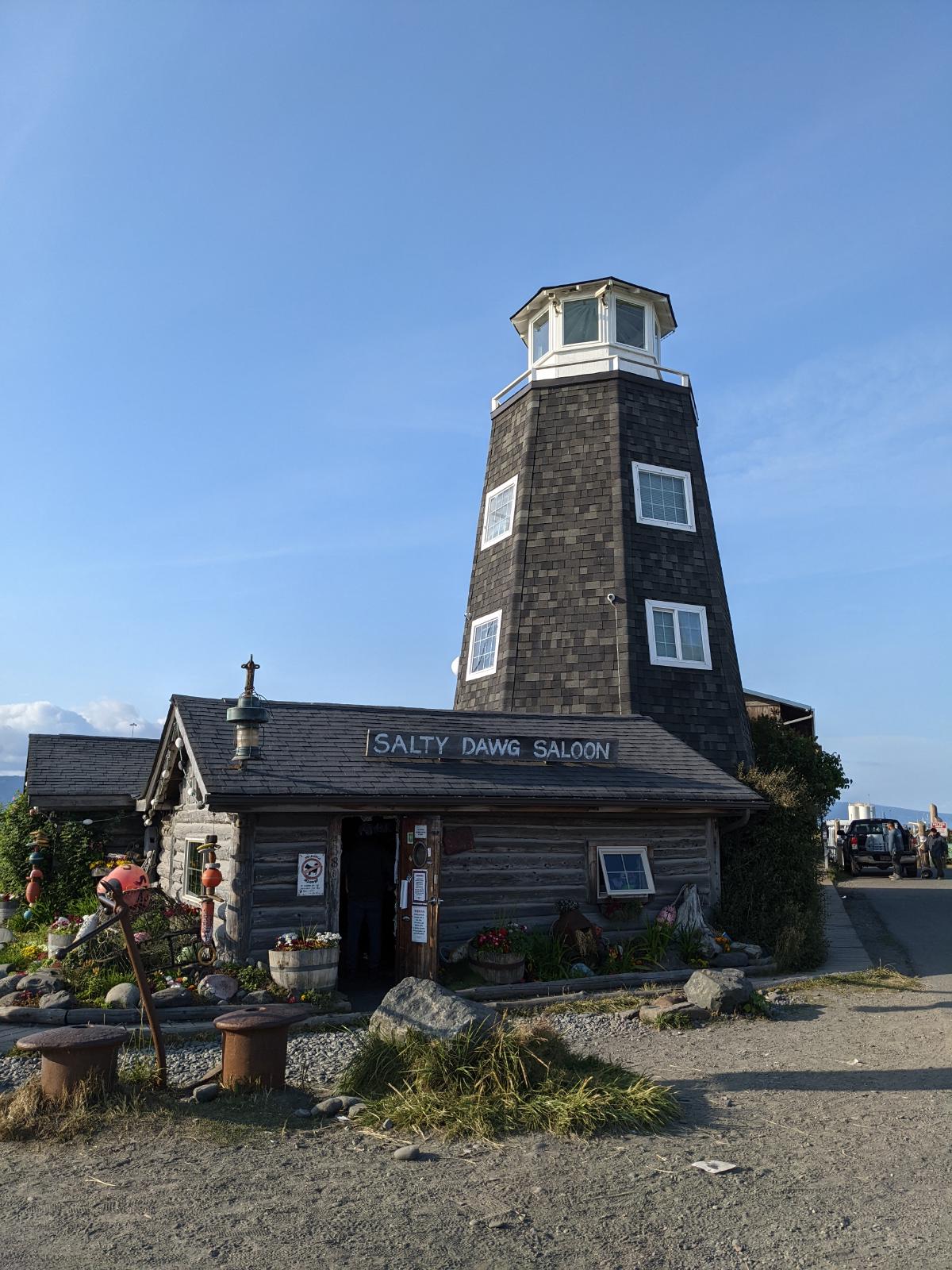 Slope Mountain is incredibly photogenic. I drew out the purples and greens in the mountainside and played with a juicy wet wash to give it character. I also tried to leave white space.
Slope Mountain is incredibly photogenic. I drew out the purples and greens in the mountainside and played with a juicy wet wash to give it character. I also tried to leave white space.
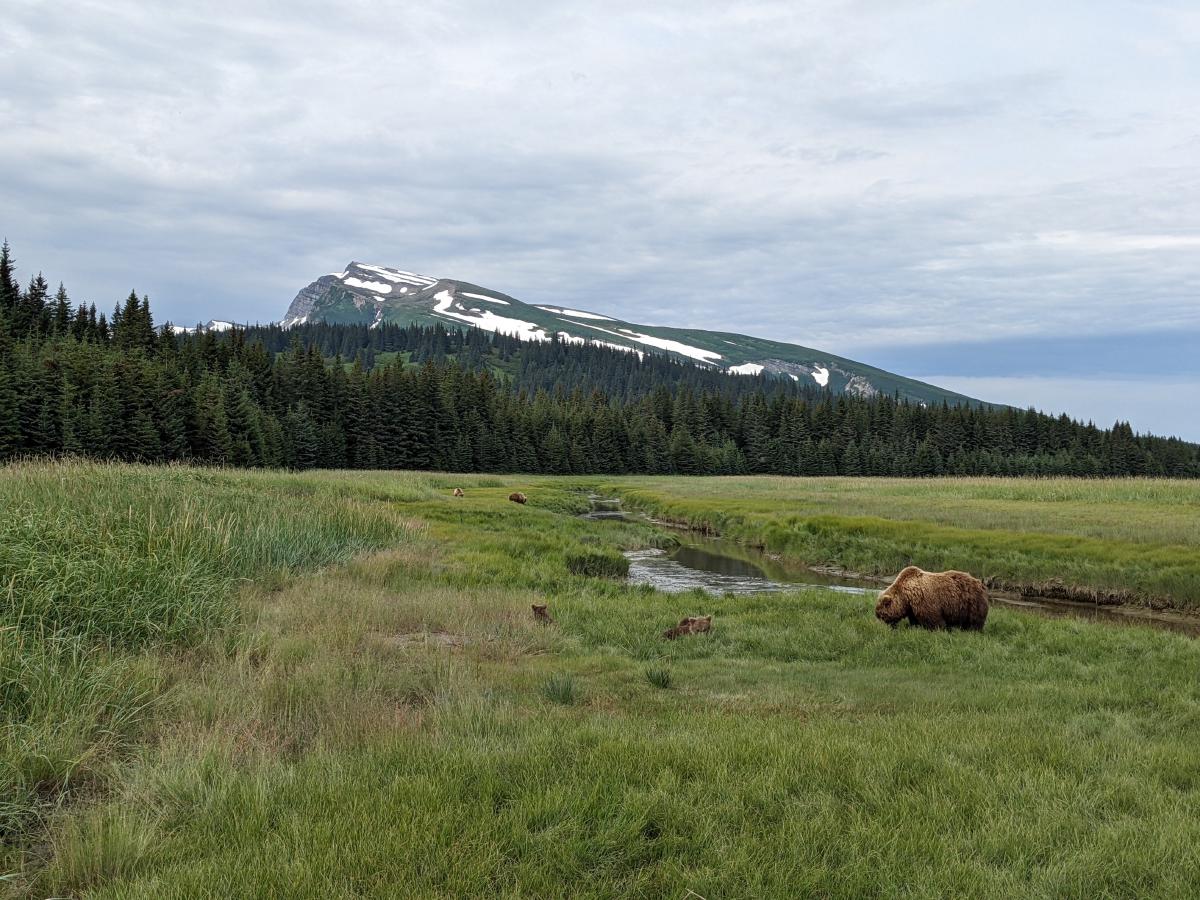 I couldn’t get over how beautiful the colors were in the view across the Exit Glacier outwash plain. Purple and green mountains, blue threads of glacial ice, and stunning yellow-green trees.
I couldn’t get over how beautiful the colors were in the view across the Exit Glacier outwash plain. Purple and green mountains, blue threads of glacial ice, and stunning yellow-green trees.
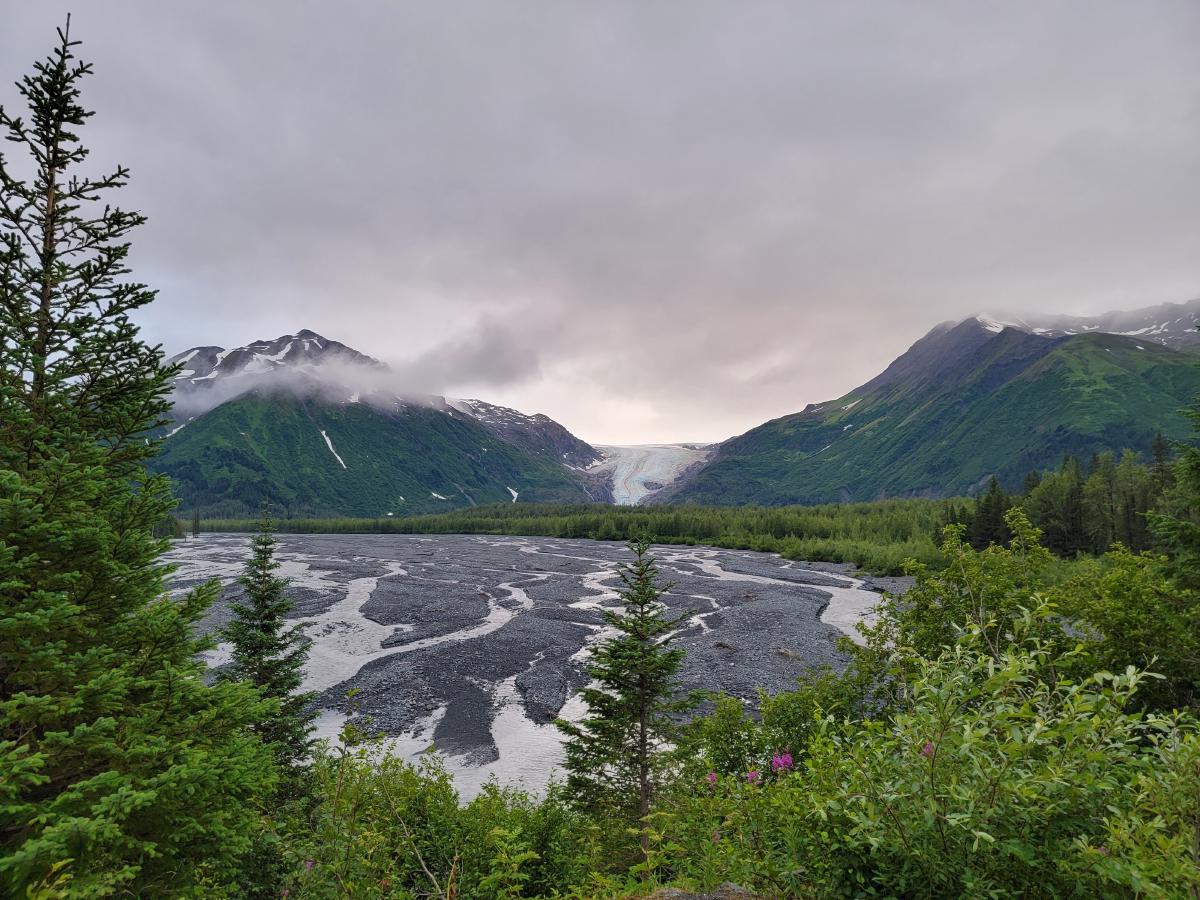
Finding My Style
I mostly used ink and wash for this trip (fountain pen underlay with watercolor on top). I like the combination of bold ink lines with vivid watercolor to draw the eye’s focus within a scene. Brown waterproof ink is my current favorite, since it makes the sketchbook feel a bit more historic and the lines are less visually demanding than black ink and brown ink has more shading in the lines.
However, I think I was drawn to this style for conflicting reasons. The first is that I love the freedom and expressiveness it allows. Buildings and sharp edges come alive and pop off of the page. The second is that I thought that I couldn’t ever be a “real” painter. Ink and wash felt more forgiving and allowed me to create in a quick and expressive style. The paintings I’d done before, with the detailed pencil underlay and many layers of watercolor, were testing my patience and not nearly as fun as the ink and wash style.
I just feel so cool in these photos!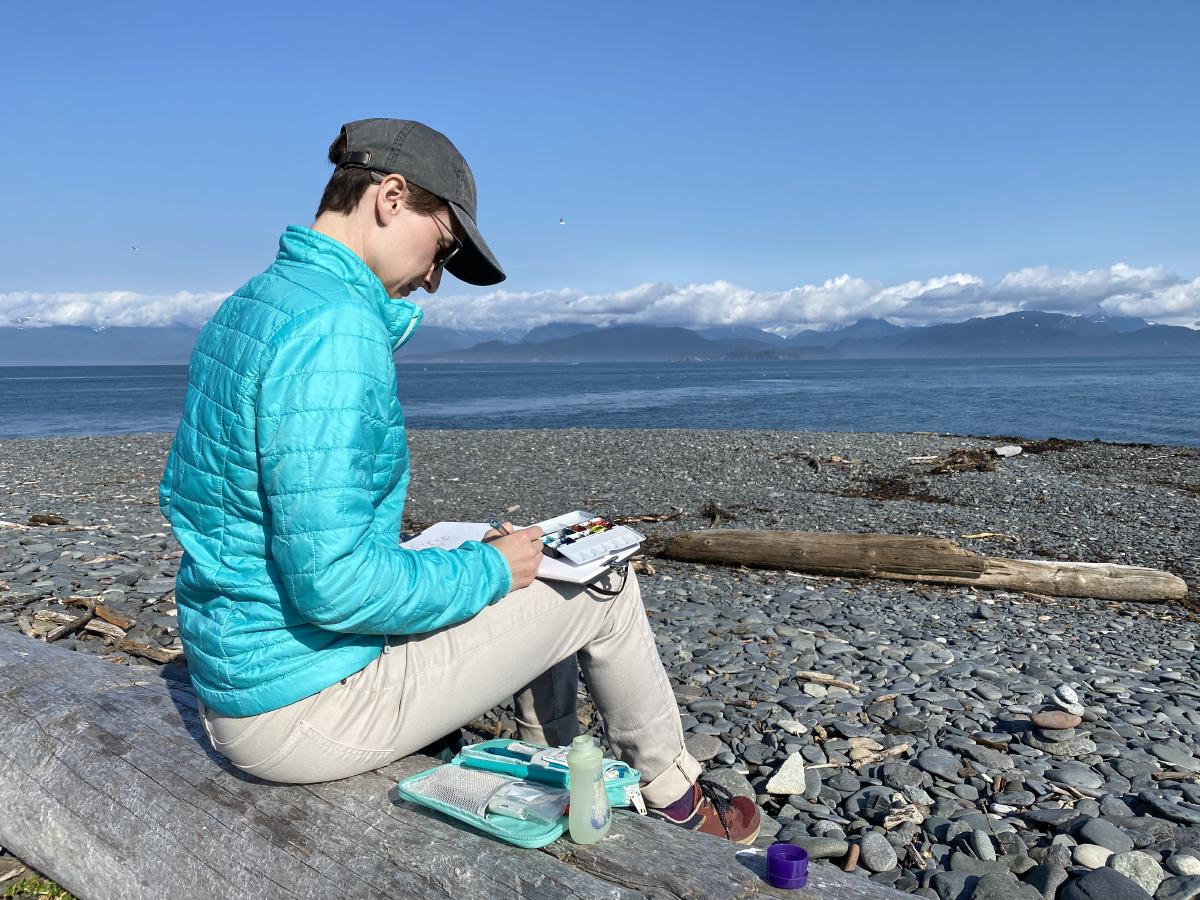
But I was selling myself short. How did I know that I couldn’t be a “real” painter and make beautiful traditional watercolor works? After spending a week in late August painting every day with my grandma in Michigan, I gained so much confidence and learned that I can paint in whatever style I’d like!
Take time to really see what’s there. Don’t just assume you know what it looks like - that’s how you end up with stick figures.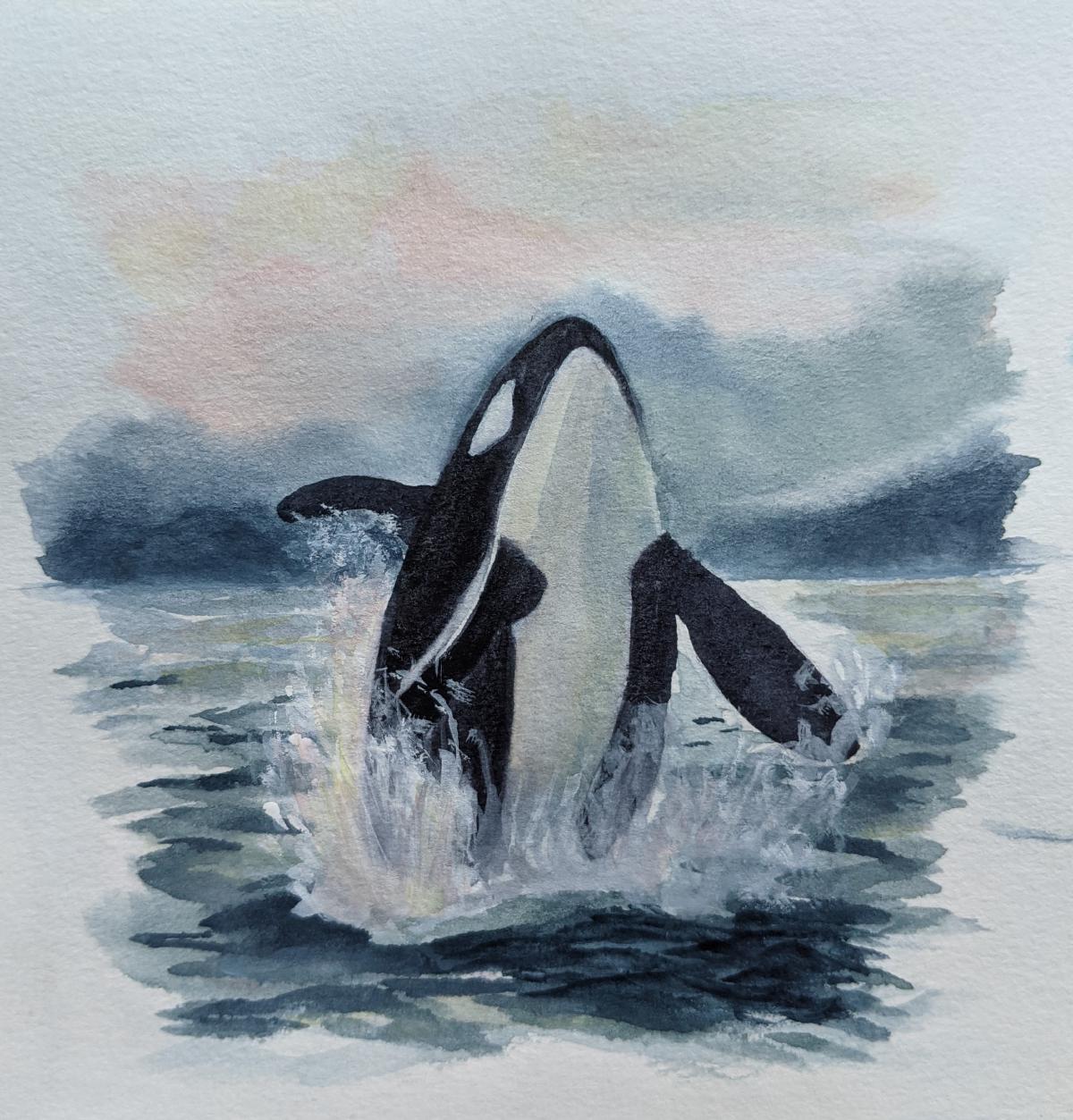
Let’s just say that the orca in the Alaska pages was painted after that week-long crash course. Can you see the improvement over the other Alaska sketches? It still has expressiveness and emotion but also accurately captures the light, shadow, and color of the scene. A sketch doesn’t have to take a lot of time - but it needs to be done correctly and through careful observation and deliberate painting. Deliberate doesn’t mean that it can’t be expressive - it just needs to be intentional. And it turns out that a week of painting for 6+ hours a day does wonders for one’s confidence!
My grandma encouraged me to fine-tune my quick painting of Delicate Arch. It’s one of the best pieces I’ve ever done.